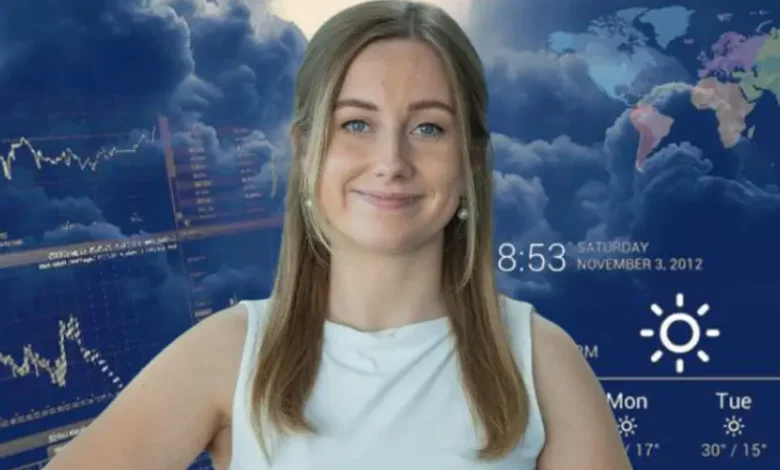How Honor Criswick Is Changing the Way We Understand Weather

Weather forecasting, a field that has traditionally been grounded in scientific models and data, is undergoing a significant transformation. In an era marked by rapid technological advances and evolving communication tools, meteorologists have become more than just scientists analyzing atmospheric data—they are educators, communicators, and public figures. Honor Criswick, a prominent meteorologist with the UK’s Met Office, stands at the forefront of this transformation. Through her innovative approach to weather forecasting, Criswick is not only reshaping how weather is understood, but also how it is communicated to the public.
In this post, we will explore the key ways in which Honor Criswick is altering the landscape of weather reporting. From the use of cutting-edge technology to her ability to engage with audiences on a personal level, Criswick’s work offers valuable insights into the future of meteorology.
The Role of Technology in Modern Meteorology
Weather forecasting is no longer a simple task of observing the sky and making educated guesses. The advent of technology has fundamentally changed how meteorologists analyze, predict, and present weather conditions. In recent years, satellite imagery, weather models, and supercomputers have made it possible to forecast weather with unprecedented accuracy. Criswick has embraced these technologies to refine her forecasts and provide real-time updates to the public.
Advanced Weather Models and Predictive Tools
Central to Criswick’s ability to forecast accurately is the reliance on numerical weather prediction (NWP) models. These models use complex algorithms and vast amounts of data from various sources—satellites, weather stations, and even ocean buoys—to simulate the behavior of the atmosphere. This data is processed by supercomputers that run simulations of weather patterns, producing forecasts for days or even weeks in advance.
By using such models, Criswick can analyze trends in weather systems and deliver more reliable predictions. This access to cutting-edge forecasting tools allows her to offer highly localized and detailed weather updates, which are vital for individuals making daily decisions, such as planning outdoor activities or preparing for extreme weather events.
Satellite Technology and Remote Sensing
Weather forecasting has always depended heavily on satellite technology. With the ability to observe weather from space, satellites provide real-time data on cloud movements, precipitation patterns, and wind speeds. This remote sensing technology allows meteorologists like Criswick to track large-scale weather events, such as hurricanes or storms, and issue warnings well in advance.
Criswick’s effective use of satellite imagery enables her to make predictions that are not only more accurate but also more timely. This technology is especially useful in monitoring extreme weather events, such as flooding or tornadoes, where early warning can save lives and reduce damage.
Simplifying Complex Meteorological Data for the Public
One of the challenges of modern weather forecasting is the complexity of the data involved. Weather systems are intricate, and interpreting the data can require years of specialized training. However, meteorologists like Criswick are tasked with communicating this data to a public with varying levels of understanding.
Engaging the Public with Clear and Actionable Information
Criswick excels at simplifying complex weather phenomena into language that is both accessible and actionable for the general public. Rather than simply presenting raw data, she communicates key takeaways that allow people to make informed decisions. For example, a typical forecast might include not just a description of the weather but also practical advice—such as the best times to travel or the likelihood of outdoor events being affected by weather conditions.
By breaking down the data into digestible segments, Criswick ensures that people not only understand what is happening in the atmosphere but also how they should respond. This clear communication is essential for helping people navigate daily life, from knowing when to carry an umbrella to being prepared for sudden, severe weather events.
The Importance of Public Engagement Through Social Media
In today’s digital age, the way weather information is shared has changed dramatically. Gone are the days when meteorologists were limited to delivering forecasts through traditional television broadcasts. Today, social media platforms such as Twitter, Instagram, and Facebook have become integral tools for engaging with the public. Criswick has leveraged these platforms to expand her reach and foster direct interaction with her audience.
Through social media, Criswick provides real-time updates, shares insights into her forecasting process, and even engages with followers who ask questions or share their weather-related experiences. This direct line of communication not only helps her build a more engaged audience but also increases the transparency of weather forecasting. By making her work more visible and interactive, Criswick empowers people to better understand the nuances of weather prediction.
Moreover, social media allows Criswick to deliver instantaneous alerts during emergencies. Whether it’s a storm warning, a heatwave alert, or sudden weather changes, her social media presence ensures that critical information reaches her audience as quickly as possible. This real-time delivery of updates is vital for public safety during extreme weather events.
Personalizing Weather Forecasts for the Individual
A significant trend in modern meteorology is the push toward personalized weather forecasting. Instead of offering generic forecasts for broad regions, meteorologists are now able to provide forecasts that are tailored to the specific needs of individuals based on their location. This personalization ensures that weather information is more relevant and useful for each person.
Criswick’s ability to harness technology for personalized forecasting has transformed how people interact with weather data. With the use of mobile apps and location-based services, Criswick provides forecasts that cater to the individual needs of her audience. Whether someone is planning to attend an outdoor concert or looking to avoid a potential downpour on their commute, personalized weather data enhances the relevance of the forecast.
Personalized forecasts are not just about providing information—they are about empowering people to make better decisions. By tailoring weather reports to an individual’s circumstances, Criswick contributes to making weather data more practical and actionable.
The Future of Weather Reporting and Criswick’s Role
As meteorology continues to evolve, the role of individuals like Honor Criswick will only become more important. The ongoing development of artificial intelligence and machine learning promises to make weather forecasting even more accurate and precise. As these technologies integrate with traditional meteorological methods, Criswick will be at the forefront of guiding the public through the next wave of weather innovation.
The growing concern over climate change also presents an opportunity for meteorologists to increase public awareness about the shifting dynamics of weather patterns. Criswick’s efforts to communicate not only the weather forecast but also the broader implications of climate change show her commitment to educating the public and promoting environmental awareness.
Conclusion
Honor Criswick is redefining the role of a meteorologist in today’s technological and interconnected world. Through her innovative use of technology, commitment to clear communication, and active engagement with the public, Criswick is making weather forecasts more accurate, personalized, and accessible than ever before.
Her work goes beyond simple predictions; she is transforming the way we experience weather data. By incorporating modern tools and fostering direct communication, Criswick is changing the way we understand and respond to weather, making it not only more relevant but also more actionable for everyone. As we look to the future, Honor Criswick will undoubtedly continue to be a leading figure in the field of meteorology, shaping how we understand weather and its impact on our daily lives.




